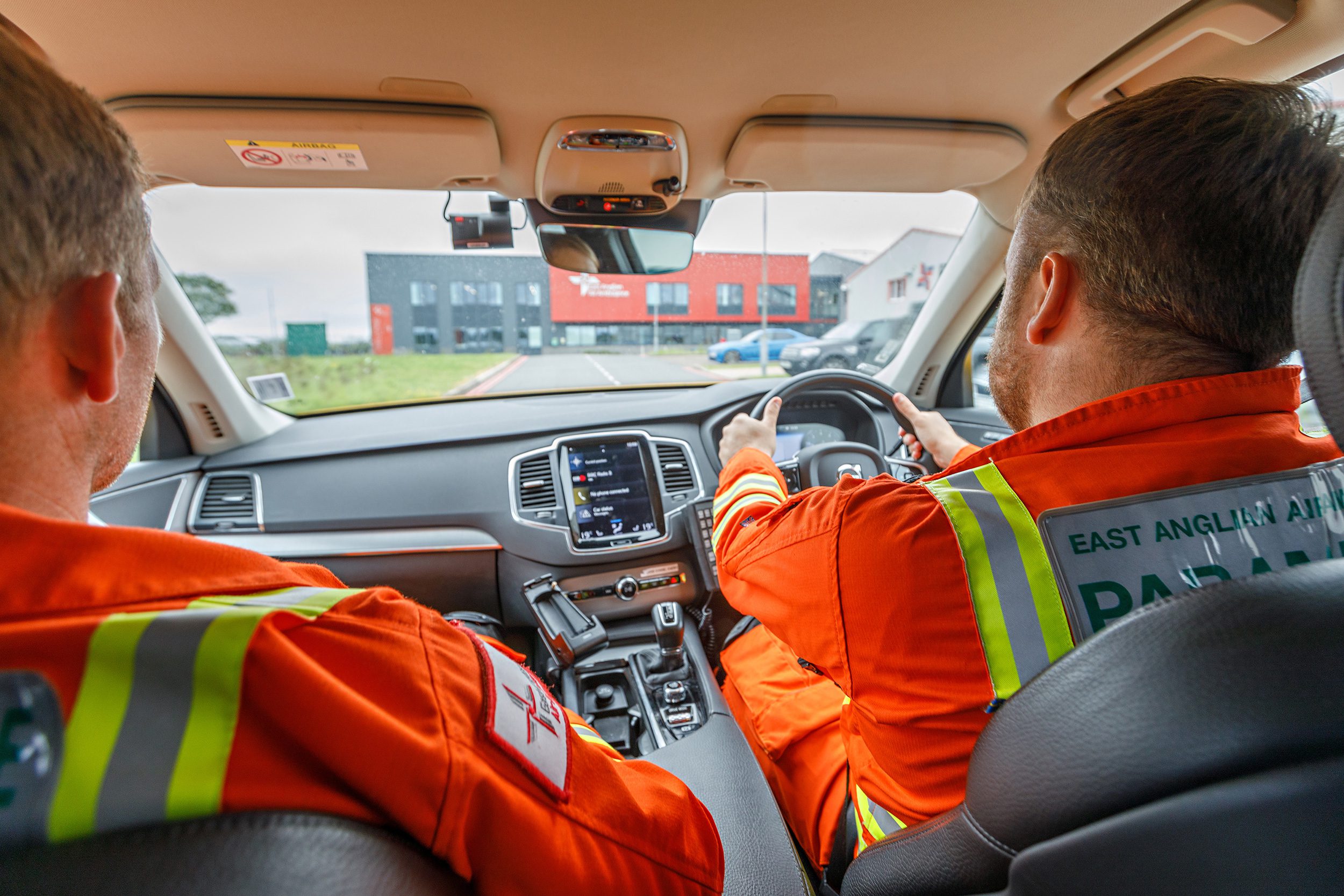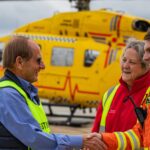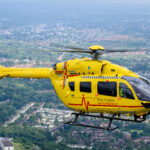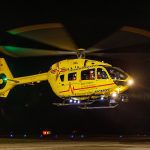30 Jun 2025
International Paramedics Day 2025
International Paramedics Day, on 8 July, highlights the power of teamwork and collaboration among paramedics and first responders across the world, and the theme this year is Unity and Community.
EAAA Critical Care Paramedic (CCP) Dave has been a paramedic since 2007 and a CCP with EAAA since 2019. To mark International Paramedics Day 2025, he has shared five things you may not know about the role of an EAAA critical care paramedic who attends Helicopter Medical Emergency Service (HEMS) taskings in our region.
Different roles, but a united goal
“Critical care paramedics have different roles to ambulance service paramedics, but we all work together to improve the outcomes of the critically ill and injured people we attend. We have access to enhanced analgesia (pain relief) sedation, and clinical skills and procedures above and beyond what the land ambulance service provides. We also have additional experience and can apply enhanced clinical decision making about best treatment options for patients.
At EAAA, HEMS paramedics and critical care paramedics are seconded from the East of England Ambulance Service (EEAST). Many of us have been within HEMS for a prolonged period and have gained vast experience. We can also offer our experience generally in extrication techniques from houses and road traffic collisions, for example, as we’ve gained this manual handling experience in the ambulance service. We also have good awareness of location of equipment within the land ambulances as well as their policies and procedures. We have a good working relationship with paramedics in the area as this is where many of us worked as road paramedics. Ultimately, we’re proud to work alongside our ambulance service colleagues to use our enhanced skills and knowledge to improve patient outcomes.”
One doctor, one paramedic on each shift
“The EAAA crew operate an Inter-Changeable Operator Model, which means the doctor and the critical care paramedic (CCP) should be able to undertake each other’s role. While they are capable of interchangeable roles, each have specific skillsets and expertise, which are used to give patients the best possible care.
The doctor on shift provides Level 3 anaesthetic capabilities and is the licensed holder of the medication. This is a regulatory requirement. They also bring their vast knowledge to some of the most challenging and critical medical incidents in our region, along with enhanced medicine and decision making. The CCP works alongside the doctor to deliver critical care skills and interventions. We are Level 2, which means we cannot anaesthetise but we can administer sedation.
EAAA critical care paramedics drive our critical care cars to the incident scene when we are tasked by road. Land vehicles are sometimes the best option to reach patients in the quickest time, especially if the medical emergency is in a location where the helicopters cannot easily land, such as urban areas, or in the event of inclement weather when the conditions are out of legal flying limits. Paramedics are trained and qualified in blue light driving as we are required to complete advanced driving courses. This also enables the doctor on shift to continue planning for the medical emergency en-route to the incident.”

Our role in the helicopter and back at base
“When we’re in the back of the aircraft with a patient during a transfer by hospital, the CCP generally sits at head of the patient. It provides the best location for us to manage the patient’s airway and to keep an eye on monitor. If the patient is conscious, we talk to them and reassure them. The doctor will do this too, but they generally sit to the side of the patient where they can access arms to give intravenous medication, if required.
When we’re back at base, if we’re not tasked, we have restocking and the checking of equipment to do. We also carry out daily checks, account for medications used, and undertake training and simulations of medical emergencies to ensure we remain current with all equipment and our standard operating procedures.
In addition to this we, alongside other members of the crew, will support base visits with previous patients and families. It’s always a humbling experience to reconnect with people we have previous attended and meet some of the incredible supporters who make our work possible.”
There are varied pathways into the profession
“I started as a lifeguard, after being a county level swimmer. When I became a pool lifeguard, I saw and helped at a few first aid incidents. I then became a beach lifeguard around the Norfolk coast. Through that, I dealt with the emergency services on a regular basis and, with my lifeguard training behind me, I developed and qualified as a paramedic. After 15 years I applied for HEMS.
It’s a vigorous selection process and, when I was successful, I underwent an intense two-week in-house training programme, which included learning policies, procedures and standard operating procedure. Following that, I completed a medical passenger safety course to be able to fly in the helicopter, followed by a month of supervised mentor shifts working as part of the team but with a supervisor. During this time, I was required to show competence on all the skills and procedures undertaken.”
It’s a great profession to get into – and one we’re privileged to do
“In my opinion to become a paramedic, specifically a critical care paramedic, the attributes needed are to be friendly, approachable, able to manage challenging situations and direct people effectively. It’s important to be adaptable and resilient too as all situations can change quickly as we attend some of the most serious medical and emergencies in Bedfordshire, Cambridgeshire, Norfolk and Suffolk.
Ultimately being a paramedic with EAAA and being able to provide critical care to people in our region when they need it most is a privilege. We’re immensely grateful to everyone – EAAA donors, fundraisers, volunteers and supporters – who make this life-saving work possible. Thank you, we couldn’t do it without you.”




